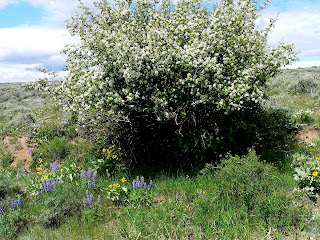Baking and Cooking in the Garden

By Kurt M. Jones, Chaffee County Extension Director I was at a conference recently and was visiting with some colleagues from across the Western United States. The conversation came around to how baking, cooking and gardening all relate to one another. It was an interesting analogy that I will attempt to recreate for you here. If you think about it for a while, you realize that for many of us, Baking is a prescriptive activity. You find a recipe that you like, maybe tweak it for high altitude adjustment, but then you follow the directions and let the science of chemistry and physics turn into delectable treats. Gardening has similar attributes. You pick plants that will work in our growing environment, arrange them according to their irrigation needs (what we call “hydrozoning”), and provide plant care including proper irrigation, proper plant nutrition to minimize stress, and Integrated Pest Management (IPM) techniques when problems appear. Ev...

